Junk Food
National Potato Chip Queen
The first Potato Chip Queen apparently was nominated in 1946.


The next gal I can find won in 1949. The caption also introduces the irreplaceable term "spud wafers," which I intend to use from now on.
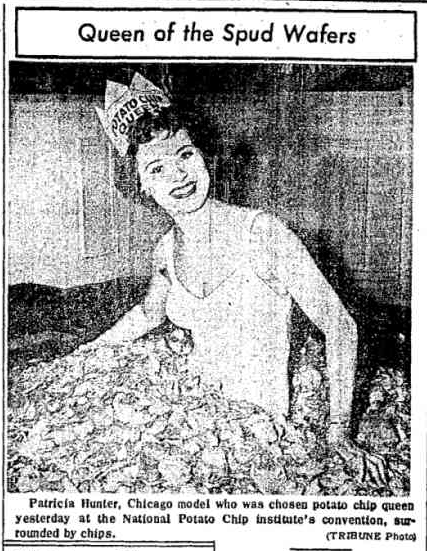
Source.
Here is a pic from their 1948 convention.

I find evidence the NPCI existed as late as 1957.
But as for Potato Chip Queens after 1949, no luck. I think the NPCI is also defunct.
Posted By: Paul - Tue Aug 22, 2017 -
Comments (3)
Category: Contests, Races and Other Competitions, Conventions, Junk Food, 1940s, 1950s
The Weeny Witch
From the 1940s to the 1970s, the makers of "Skinless" wieners tried hard, through relentless advertising, to establish "Weeny Witch" parties as a Halloween tradition. Basically, these were parties that completely centered around hot dogs. A "Weeny Witch" (a hot dog dressed up as a witch) would serve as a table centerpiece.To make the Weeny Witch party more festive the company distributed a pamphlet with party suggestions, which included "Bobbing for Franks" as well as "Feeding the Weeny Witch." The latter involved creating a cardboard cutout of a witch's head. Blindfolded kids would then try to stick their weeny in the witch's mouth.
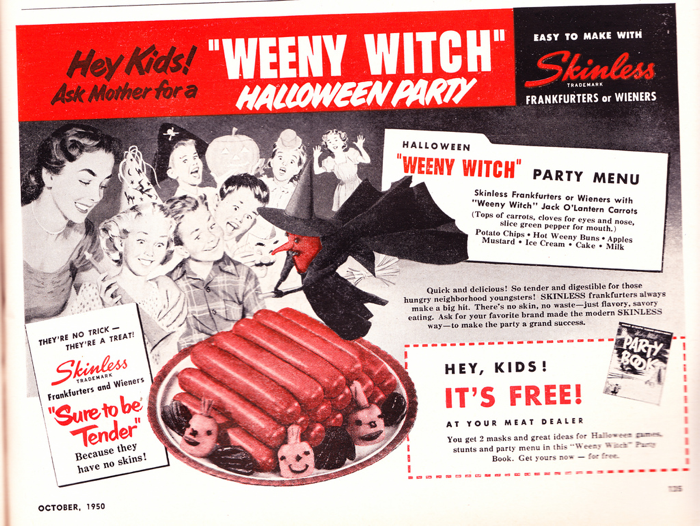
Image source: reddit


Image source: And Everything Else Too

Albuquerque Journal - Oct 23, 1949
Posted By: Alex - Mon Oct 31, 2016 -
Comments (5)
Category: Food, Junk Food, Halloween
Most Expensive Potato Chip
Swedish beer-maker St. Erik's Brewery recently debuted the world's most expensive potato chip. A box of 5 chips cost 499 kr, or around $56, which comes out to about $11 per chip.They're made with a bunch of fancy-sounding ingredients: Matsutake, Truffle Seaweed, Crown Dill, Leksand Onion, India Pale Ale Wort, and Ammarnäs Potatoes.
However, you can no longer get your hands on any of these chips because the beer-maker only made 100 boxes of them, and they've already sold out.


Posted By: Alex - Wed Oct 19, 2016 -
Comments (3)
Category: Food, Junk Food, Overpriced Merchandise
Mystery Illustration 27
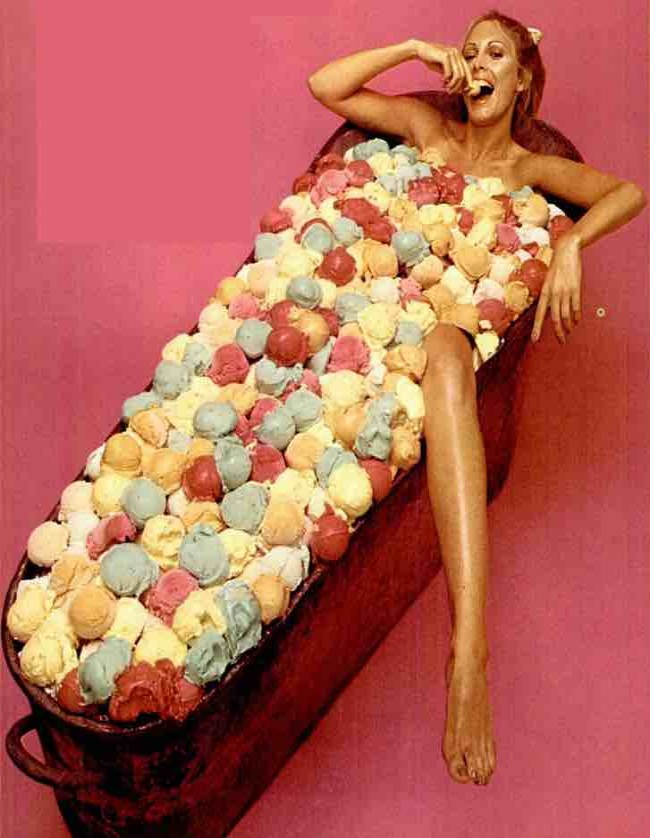
Which regional magazine of the fifty states decided this would be a good way to illustrate the pleasures of summer?
The answer is here.
Posted By: Paul - Thu Aug 11, 2016 -
Comments (7)
Category: Art, Magazines, Regionalism, Sex Symbols, Junk Food, 1970s
Mr Burger
Mr Burger, a Melbourne-based chain of hamburger restaurants, recently offered to give "free burgers for life" to anyone who would legally change their last name to "Burger." They specified that this meant seven burgers a week, for as long as the person maintained the name Burger. However, anyone whose last name already was Burger, was disqualified from getting the award.But then the restaurant heard from the Government Solicitor's office (the agency responsible for processing name-change applications), informing them that it would not process any applications for people changing their name to "Burger" for the purpose of winning burgers, because such applications "are not in the spirit of the name-change process." So the competition was canned.
At least, that's the story Mr Burger is telling everyone. Perhaps the restaurant actually got cold feet, realizing too many people might have taken them up on their offer.
As far as last names go, Burger really isn't that bad. I might have done it, except I'm not interested in eating burgers every day for the rest of my life.
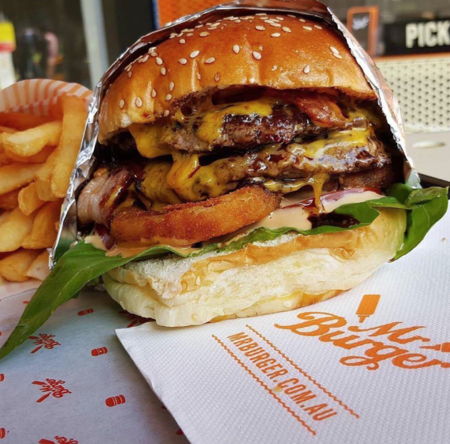
Posted By: Alex - Sat Jul 02, 2016 -
Comments (3)
Category: Contests, Races and Other Competitions, Odd Names, Junk Food
40-year-old Twinkie
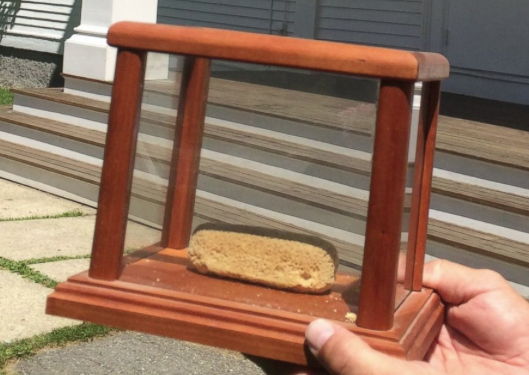
At the George Stevens Academy in Blue Hill, Maine, a Twinkie has been kept on display for 40 years.
Back in 1976, chemistry teacher Roger Bennatti placed the Twinkie on top of the class blackboard in response to a student question about the legendary shelf-life of Twinkies. Eventually, the Twinkie was moved into a glass display box, but it remains at the school as a perpetual experiment on Twinkie immortality. More info: abc news.
Related Twinkie posts:
Twinkie Facts
Twinkies Art
Posted By: Alex - Fri Jul 01, 2016 -
Comments (5)
Category: Food, Junk Food, Experiments
Man finds $20 inside cheeseburger
When people find stuff in their food that doesn't belong there, it's usually things like cockroaches, small frogs, rat parts, etc. But when Dave Cook bit into his McDonald's cheeseburger, he found a folded-up $20 bill. He didn't complain to the restaurant about the unusual topping. Instead, he took a picture of the burger, finished it, and then called up the local TV news (WTVR in Virginia) to tell them about it.I don't think a $20 bill is something that would get into a burger by accident. It had to be put there. The question is who put it there: Cook himself or one of the McDonald's employees?
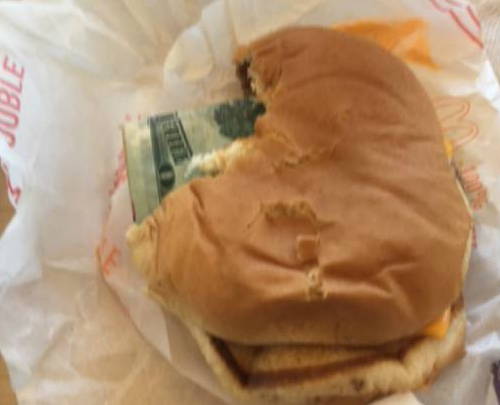
Posted By: Alex - Sun Jun 12, 2016 -
Comments (3)
Category: Food, Junk Food, Money
Square Donuts
The Square Donuts company of Terre Haute, Indiana has been making square donuts for 50 years, and they've trademarked the name. Eleven years ago, the Family Express convenience store also began making donuts that are square, and selling them as "square donuts." The Square Donuts company recently noticed what they were doing. Therefore, lawyers are now involved.Square Donuts demands that Family Express stop selling those square donuts. Family Express insists that "square donuts" is too generic a concept to trademark.
I wonder if anyone has trademarked Triangular Donuts or Polyhedral Donuts? A business opportunity perhaps?
More Info: CBS Chicago

Posted By: Alex - Tue Mar 29, 2016 -
Comments (11)
Category: Business, Food, Junk Food, Lawsuits
The Perect Thanksgiving Dessert
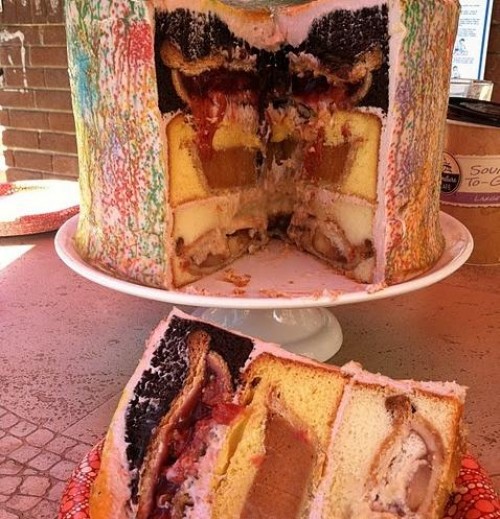
If Turducken is Gluttony 101 then Piecaken is the Masters Thesis. A pie inside a cake layered on another pie inside another cake. As many layers as you like with as many different combinations as you can think up. Decadent and delicious! Happy Thanksgiving everyone!
Posted By: Alex - Wed Nov 25, 2015 -
Comments (5)
Category: Excess, Overkill, Hyperbole and Too Much Is Not Enough, Food, Junk Food, Holidays
Hog dogs with a message
In 1990, the Viskase Corp. debuted a breakthrough in hot-dog technology. It had developed an edible ink that allowed messages to be printed onto hot dogs during the manufacturing process.As far as I can tell, this technology failed to find a market. The NY Times reported that "the Viskase Corporation found no takers for its offer to print edible-ink ads on hot dogs."
Perhaps this was because a) what kind of message is best delivered via hot dog?, and b) hot dogs are usually covered with condiments, which would hide the message.
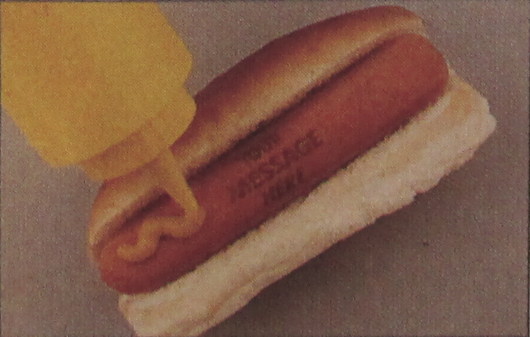
Image source: Newsweek - Jan 22, 1990
Posted By: Alex - Sat Nov 14, 2015 -
Comments (5)
Category: Food, Junk Food, Advertising, 1990s

| Who We Are |
|---|
| Alex Boese Alex is the creator and curator of the Museum of Hoaxes. He's also the author of various weird, non-fiction, science-themed books such as Elephants on Acid and Psychedelic Apes. Paul Di Filippo Paul has been paid to put weird ideas into fictional form for over thirty years, in his career as a noted science fiction writer. He has recently begun blogging on many curious topics with three fellow writers at The Inferior 4+1. Contact Us |




